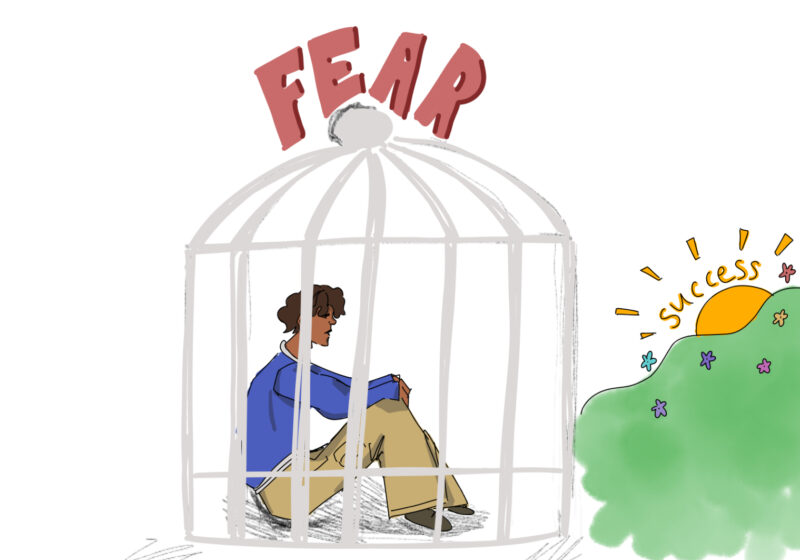The most famous film depicting college life opens with several nighttime shots of a beautifully lit, majestic campus. Triumphant academic music plays as two well-dressed students leave their dormitory and make their way past an old stone chapel and a stately administration building. They soon cross a grass quadrangle between an impressive library and a bronze statue of a man in turn-of-the-century attire. The man stands high atop a pedestal, staring forward. The camera pans down the impressive figure and moves below to a plaque: EMIL FABER / FOUNDER – 1904 A.D. / KNOWLEDGE IS GOOD.
Short of the school motto, there isn’t much about UR that differs from the campus stereotypes of Faber College in “Animal House.” Rochester’s campus has all the classic architecture, the fraternity houses, the grand library, the long columned buildings, the many grassy quadrangles and, of course, the statue.
The figure stands left foot forward on an eight-foot tall marble slab above UR’s residential quad. Equidistant between two of the oldest buildings on campus, the statue greets students as they head toward the stone steps that descend to their dorms. The man standing on the marble is a specific shade of faded green copper. He sports a scruffy beard, wears an academic cap and gown over a suit with a bow tie. His left hand is raised, gripping the breast of his jacket, while his right hand holds a diploma. Stoically, he stares ahead at the distant Eastman Quadrangle.
The plaque below solves the mystery of the man’s identity: MARTIN BREWER ANDERSON / FIRST PRESIDENT OF THE UNIVERSITY OF ROCHESTER / 1853-1888 / ERECTED BY ALUMNI OF THE UNIVERSITY AND CITIZENS OF ROCHESTER IN 1904.
Martin Anderson was a scholarly man. He was appointed the first president of UR after teaching Latin, Greek, mathematics, rhetoric and modern history for eight years. He erected the first academic building of the University and oversaw the first move of the school from a hotel on Buffalo Street to the Prince Street campus in downtown Rochester. Sculptor Guernsey Mitchell created the statue in his honor in 1905, following his 1890 death. In 1955, a truck moved the 37 ton statue when the women’s college relocated from the Prince Street Campus to the current River Campus.
Now, the Anderson statue surveys hoards of students every Dandelion Day, gets to watch the pumpkin launching contest every Halloween and occasionally even gets dressed up by the “Azariah Boody Society,” a school-spirit club that once decorated Anderson as a ship-wreck survivor. An old school legend even says that Rush Rhees Library needs to be in Anderson’s sight at all times, lest it burn down – the reason the Wilson Commons ceiling is made of transparent glass.
The location at the gateway to the Residential Quad is prominent, but also ironic, since Anderson himself refused to build dormitories during his tenure, viewing them as having “every facility for the propagation of evil principles and habits.”
Junior Dan Richman, a dual physics and music major, lived just several yards away from the Anderson statue last year, in Burton Hall, one of the original River Campus dormitories. He walked by the towering monument at least two or three times a day.
“It’s interesting,” he reflected, noticing the statue for the first time in a while, “because the academic quad, the place of higher learning, where we study, is elevated, and the residential quad, where we live, eat and sleep and such, is lower.” Richman seemed to have given this some thought. “And as we leave the academic quad,” he continued, “and descend toward our dorms for our baser functions, our baser needs, like eating and sleeping, there’s a man in academic robes. It’s as if, as we head down to our rooms, he’s there reminding us of our higher academic aspirations and responsibilities.”
At nighttime, the statue is a different image. Lit only by the roof lights of the adjacent dormitories, Anderson is entirely in silhouette. A few lights from the distant classrooms reflect off the marble pedestal. The plaque is in too much shadow to be readable. But as a couple students make their way past the towering copper statue after a late night of studying at the library, the plaque below doesn’t need to be read. Gazing up at the robed Martin Anderson, diploma in his hand, you can sense the words: “Knowledge is Good.”
Fountaine is a member of the class of 2008.





